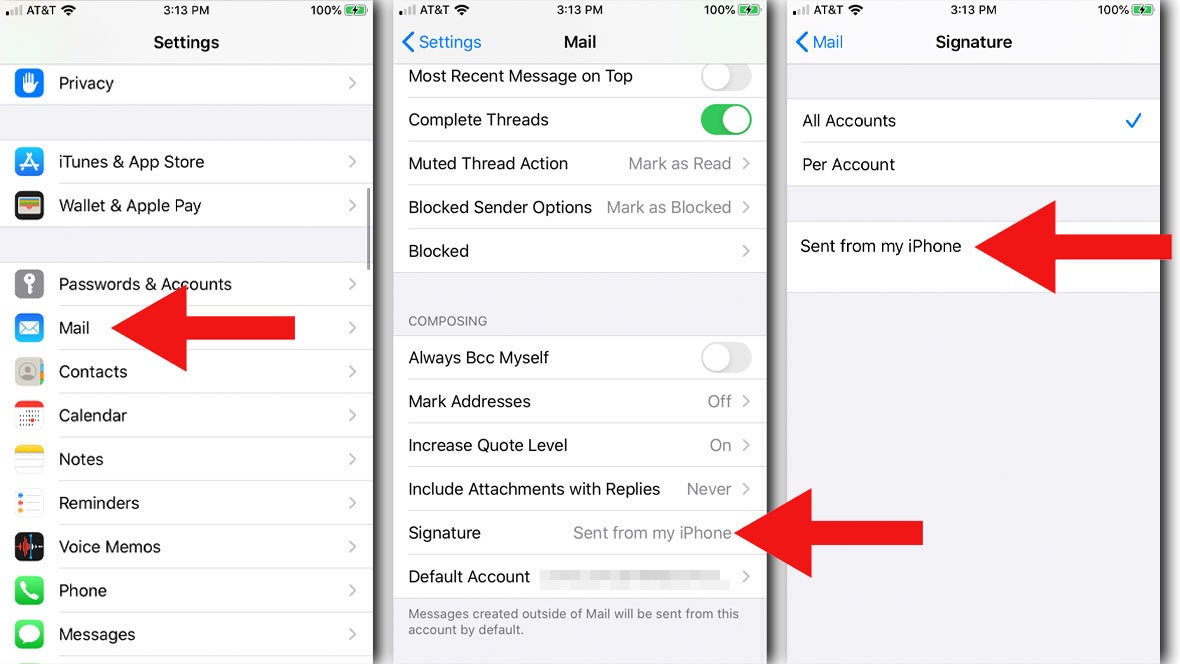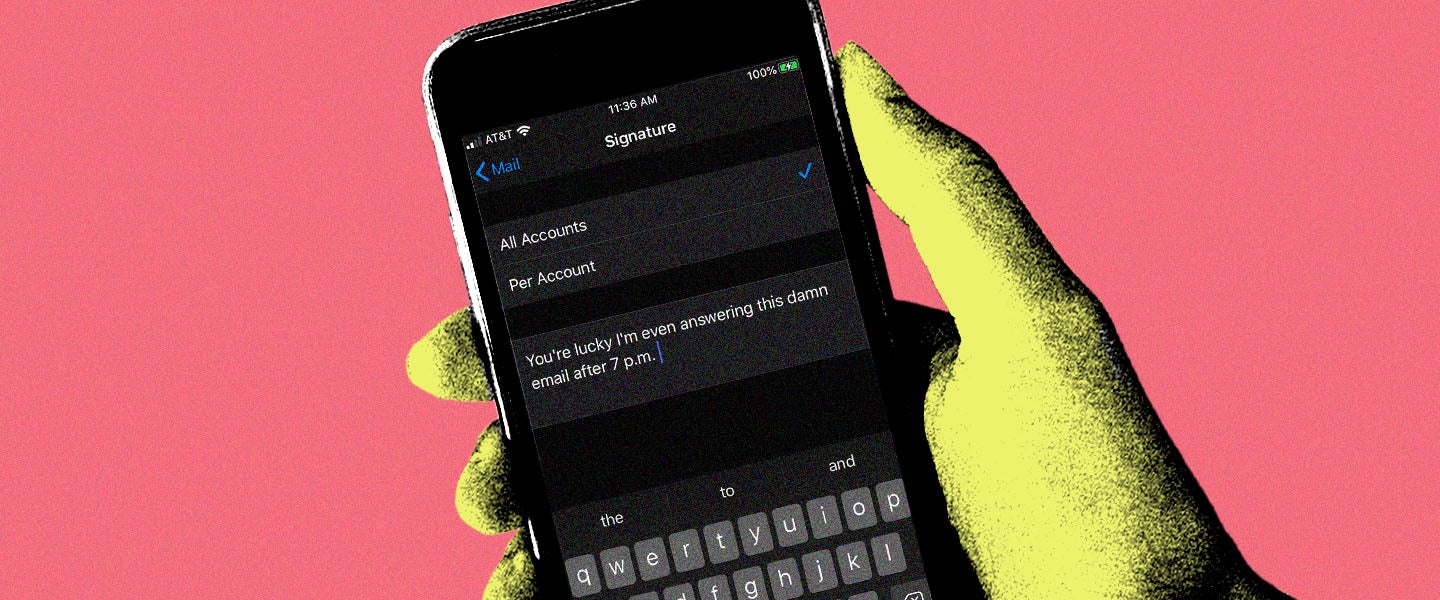I’d like you to think I’m such a dutiful, devoted writer that I’m constantly sitting before my laptop, even on evenings and weekends, tapping away on a full-size keyboard. The reality is, I spend most of my time clickity-clacking my acrylic nails against my iPhone screen, producing a typo with nearly every word.
You don’t need to know what. Mind your own fucking business.
But for some reason, the iPhone wants to tell everyone that I am, indeed, on my iPhone. In fact, it does so explicitly in my emails, automatically ending them with, “Sent from my iPhone.” It might as well say, “Sent after snorting a fat line of coke off the middle console of a stolen cop car while I scam my employers into thinking I’m a responsible employee,” it makes me look that brazenly out of the office.
On the other hand, we all deserve some work-life balance — you’re lucky I’m even answering this damn email after 7 p.m., regardless of the medium. But what function does the “Sent from my iPhone” line even serve?
“Responding from your cell looks as if you’re wanting to get back with them in a timely manner,” says Diane Gottsman, owner of the Protocol School of Texas. But she warns that if the subject of the email is serious or highly confidential, you should avoid including it: “Most of the time it doesn’t hurt, but it’s not meant for emails that require official correspondence.”
For some, the “Sent from my iPhone” line functions almost as an apology for whatever mistakes might be present; however, per Gottsman, sending an email from your phone isn’t a very good excuse for that. “Always check for typos, and treat it like you would any other professional email,” she says.

Of course, if you get sick of deleting it from the bottom of every email, you could just turn it off. On an iPhone, go to your settings, then mail. Toward the bottom, there’s an option to edit your signature. You can rid yourself of the signature altogether, or you can customize it to say whatever you want. Some even keep the message but add further clarification like, “Please excuse any brevity of typing errors.” Or they try to get cutesy with it, amending the message to say, “Typed with stubby fingers on my iPhone virtual keyboard.” (Why don’t you just forward me a chain email about how I’m going to die in seven days if I don’t send it to 10 more people, instead?)
When it comes to automatic email signatures, the only good method is to keep it professional and practical. “It’s important to have your full signature on your cell phone so people know who you are,” says Gottsman. Basically, your email signature should be your name, job title and company. Throw your phone number in there if you want.
“I stan an email signature,” says my colleague Joseph Longo. His includes his name, personal website, email address and phone number. “It makes me feel powerful and important,” he says. “It says, ‘Yes, I have people looking to contact me, so here it all is.’”
I personally like to choose mine as I go. Sometimes, if I’m feeling cheeky, I’ll even keep the “Sent from my iPhone” line, just to emphasize the fact that I’m going out of my way to answer.
I have to keep up the dutiful and devoted image somehow.

